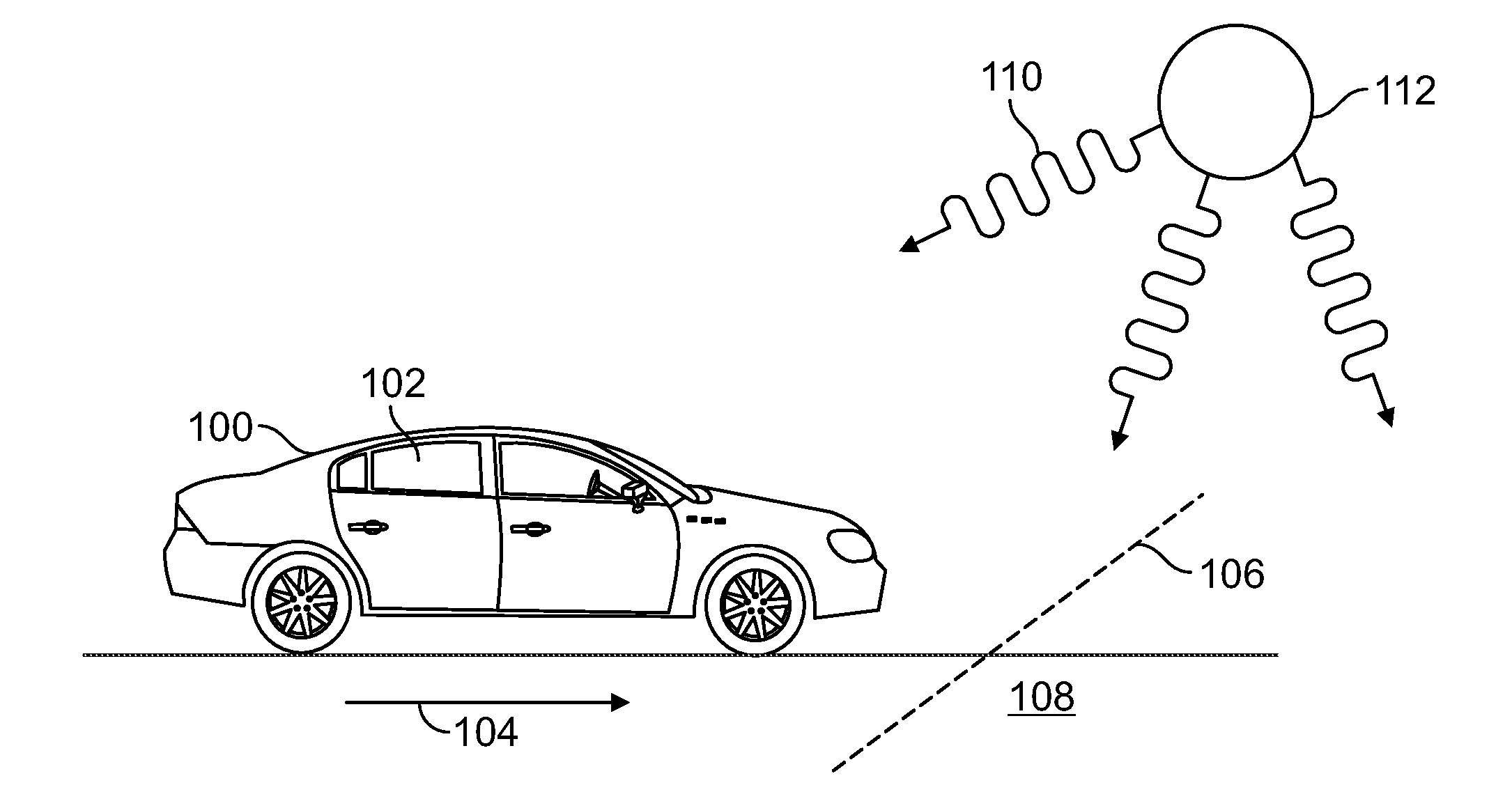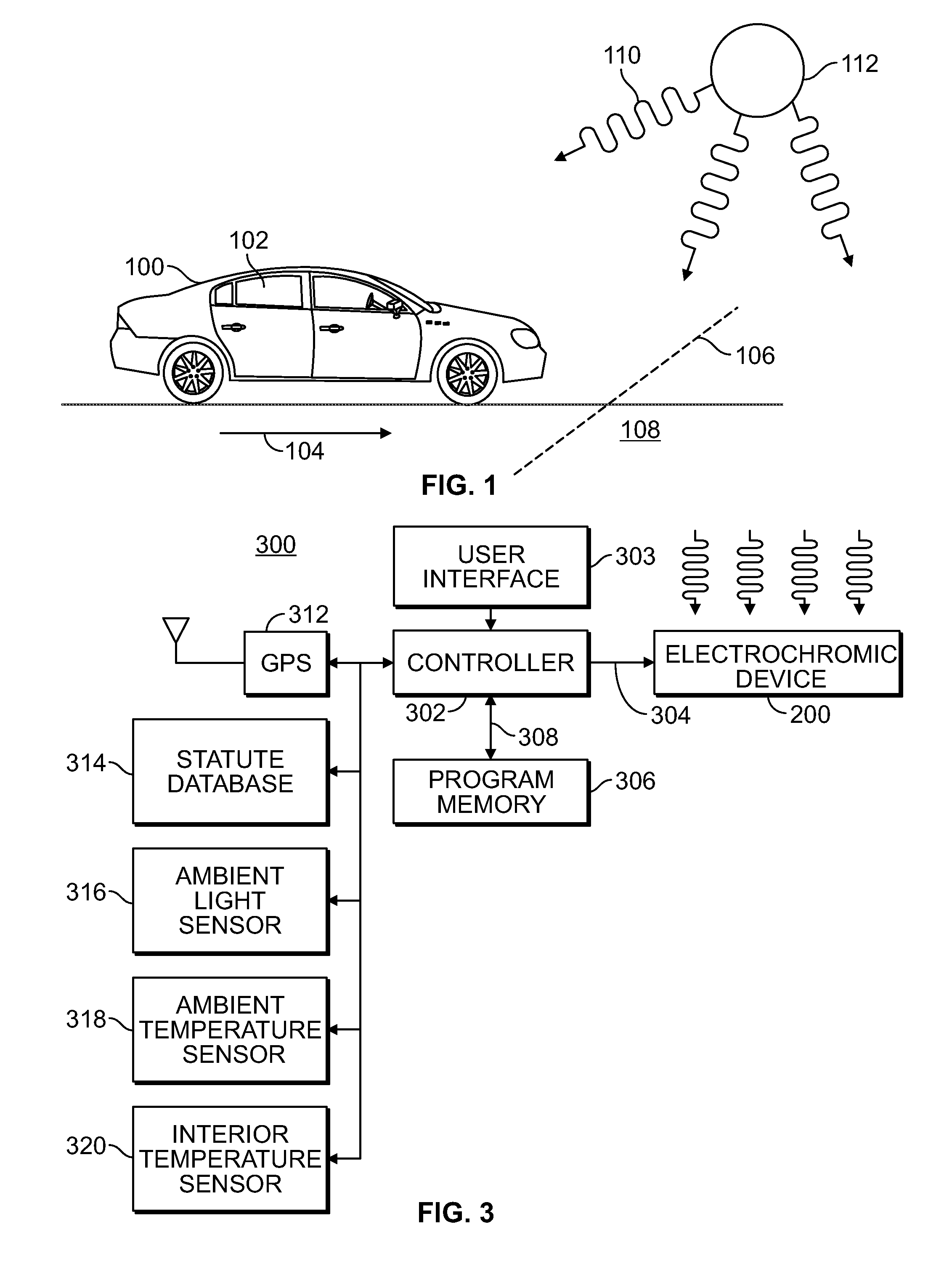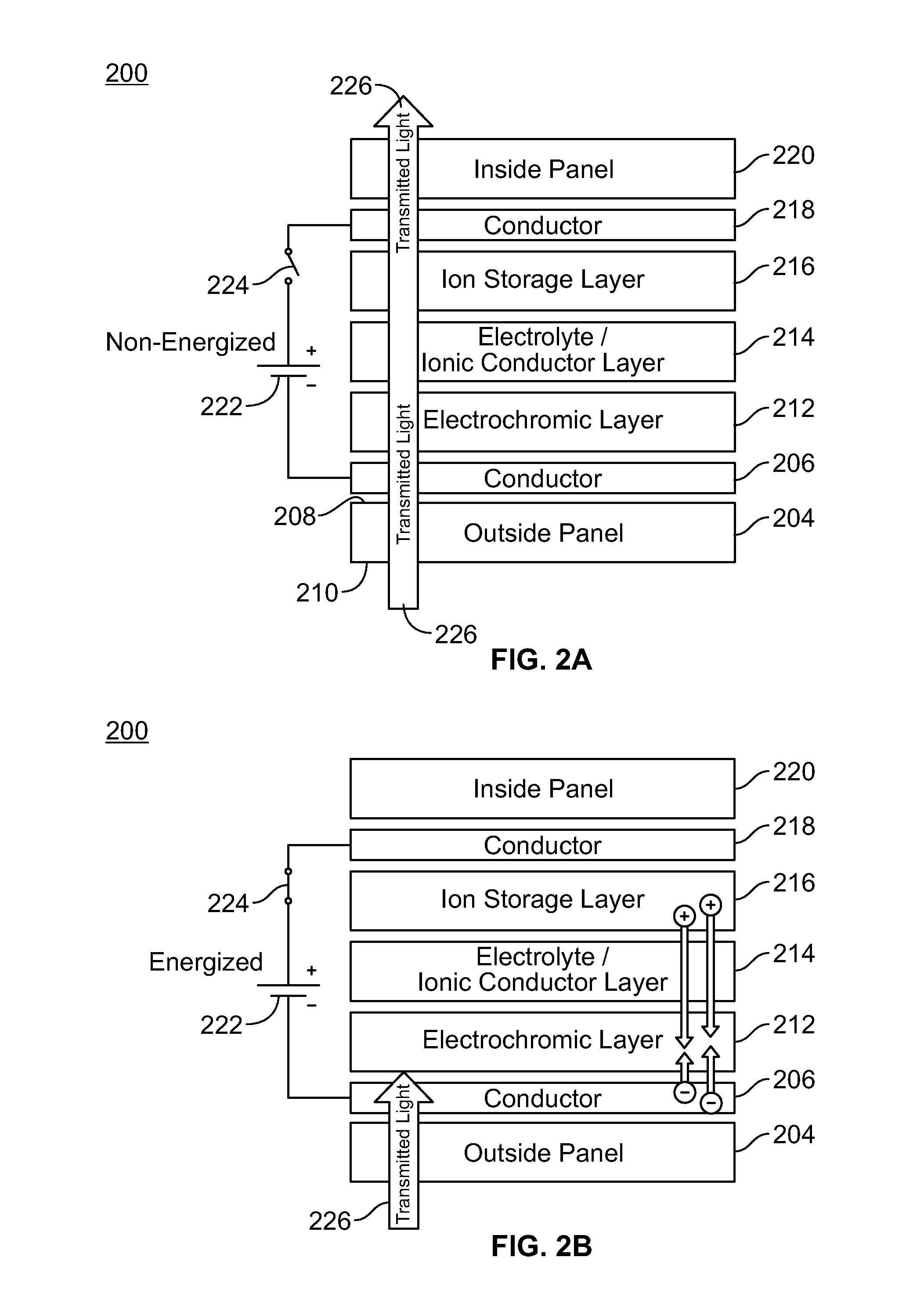Photo-electrochromic window tinter
a technology of photoelectrochromic window and tinting, applied in the direction of optical radiation measurement, instruments, navigation instruments, etc., can solve the problems of vehicle owners being cited by law enforcement agencies, affecting the visibility of windows, and obscuring or reducing the ability of drivers to s
- Summary
- Abstract
- Description
- Claims
- Application Information
AI Technical Summary
Benefits of technology
Problems solved by technology
Method used
Image
Examples
first embodiment
[0019]In a first embodiment, of the photo-electrochromic window tinter 300, the controller 302 queries the GPS receiver 312 for geographic coordinates, i.e., a location of where the vehicle is located. The location of the tinter or a vehicle it is attached to is provided to the controller in latitude and longitude coordinates. The controller 302 thereafter queries the window tinting rules database 314 to determine whether the current location of the vehicle is inside of a jurisdiction where tinted windows are prohibited, or if there is a tinted window opacity specification, i.e., a rule or law that dictates the darkness or degree to which a window tint passes light, which needs to be complied with.
second embodiment
[0020]In a second embodiment, which is useful for all vehicles but especially useful to electrically-powered vehicles, the controller 302 queries the ambient light sensor, ambient temperature sensor, and / or the interior temperature sensor 320 to adjust the tinting on the electrochromic device 200 to optimize interior temperatures responsive to interior and exterior conditions.
[0021]FIG. 4 depicts a method 400 of adjusting a window tint responsive to a geographic location. A method is performed by a controller or computer such as the controller 302 depicted in FIG. 3 and described above.
[0022]At step 402, the controller obtains its current location from a navigation system such as the GPS system 312 depicted in FIG. 3. Once the location is obtained from the GPS, a database is consulted at step 404 to determine or locate window tinting rules that apply to where the vehicle is located. As used herein, a window tinting rule is a statute or ordinance or other law or regulation that defin...
PUM
 Login to View More
Login to View More Abstract
Description
Claims
Application Information
 Login to View More
Login to View More - R&D
- Intellectual Property
- Life Sciences
- Materials
- Tech Scout
- Unparalleled Data Quality
- Higher Quality Content
- 60% Fewer Hallucinations
Browse by: Latest US Patents, China's latest patents, Technical Efficacy Thesaurus, Application Domain, Technology Topic, Popular Technical Reports.
© 2025 PatSnap. All rights reserved.Legal|Privacy policy|Modern Slavery Act Transparency Statement|Sitemap|About US| Contact US: help@patsnap.com



